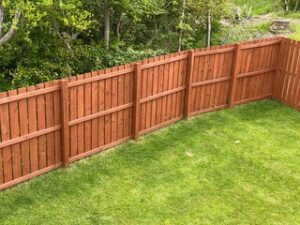Deck building offers a creative way to upgrade outdoor living. It is no longer just about wooden planks and nails. Today, deck construction embraces fresh trends and techniques. Innovation meets function in exciting new ways.

Designing a deck now involves customized elevation features. Builders explore multi-level layouts to maximize space. These layers allow different zones for seating, grilling, or relaxing. Each level adds dimension to the overall structure. Contact Deck Builders Charleston SC for professional help.
Some decks are now being built as extensions of indoor areas. The goal is to create a seamless flow between environments. Using matching tones and complementary materials achieves this. This blending makes outdoor spaces feel more connected and intentional.
New materials are being used that resist weather and wear. Composite options that look natural but last longer are trending. These surfaces often require less maintenance. Users appreciate the convenience without sacrificing aesthetic.
Sustainable practices are also influencing modern deck building. More homeowners want eco-conscious materials and designs. Reclaimed wood or recycled content helps reduce environmental impact. Ethical sourcing is now part of the conversation.
Builders now incorporate storage into the frame of the deck. Hidden compartments beneath benches save space. Under-deck storage allows for weatherproof solutions. It’s a clever way to declutter without losing style.
Technology is being integrated into outdoor decks more than before. Lighting systems now operate with motion sensors or timers. Some decks feature wireless charging stations or speakers. These features turn a simple deck into a smart retreat.
Deck railings are no longer just safety barriers. They’ve become decorative statements in their own right. Sleek glass or cable railings offer unobstructed views. Curved or sculpted designs bring added personality.
Decks are being designed around natural elements on-site. Instead of removing trees, they’re incorporated into the layout. This preserves shade and adds a unique centerpiece. The result feels harmonious and grounded.
Some decks float above ground with minimal visible support. These suspended styles add a sense of lightness. Hidden posts or cantilever designs make them possible. They blend modern engineering with striking visuals.
Water elements are being added directly to deck areas. Small fountains or built-in ponds add tranquility. The sounds of moving water offer a calming effect. It’s like bringing a spa experience home.
Pergolas and shade structures have evolved too. Adjustable slats now allow better control of sunlight. Some models even respond to weather conditions. This makes lounging outdoors more comfortable year-round.
Color palettes for decks are becoming more refined. Cool greys, charcoals, and warm neutrals dominate trends. Bold accent colors add personality to railings or steps. This approach elevates design without overwhelming the eye.
Outdoor kitchens are now regular additions to decks. Custom counters, sinks, and mini-fridges boost functionality. Entertaining guests becomes easier and more enjoyable. It turns an ordinary space into an alfresco haven.
Privacy is also addressed in innovative ways. Vertical gardens or sliding screens are rising in popularity. These create cozy zones without feeling boxed in. Nature and design merge beautifully in these options.
Deck lighting now includes low-profile LED strips. These offer ambient light without harsh brightness. They’re often installed under railings or stairs. It’s both safe and visually appealing at night.
Some decks include built-in seating shaped to match the deck lines. Curved benches or geometric layouts feel intentional. These remove the need for bulky furniture. Space is used more efficiently and looks more modern.
Homeowners also experiment with mixed materials in one build. Stone, metal, and wood are combined creatively. This creates textural contrast and visual interest. Each section becomes its own design moment.
There’s a rising trend in rooftop decks for space-limited homes. These offer stunning views and a private retreat. Building codes guide their construction carefully. The payoff is a peaceful escape above the world.
Fire features are now integrated into the deck design. Gas fire pits or linear burners enhance ambiance. They allow warmth without smoke or sparks. Night gatherings become more inviting and memorable.
Drainage systems are improved for longevity and cleanliness. Some decks now feature under-deck drainage trays. These collect water and route it away safely. It prevents rot and protects belongings stored underneath.
Deck planning now often uses virtual design software. Homeowners preview layouts in 3D before building. It helps identify layout issues early on. The result is more confidence and satisfaction post-build.
Solar-powered accessories are also growing in demand. Lights, fans, or small appliances can run independently. They reduce energy costs and are eco-friendly. Installation is often wireless and simple.
Weatherproof fabrics are used for cushions and covers. These resist fading and dry quickly after rain. The materials stay soft and breathable. This makes outdoor lounging more pleasant and long-lasting.
Builders are designing decks to improve airflow and temperature. Slatted flooring or cut-out zones aid ventilation. These choices keep surfaces cooler underfoot. Comfort becomes part of the design philosophy.
Zoning laws and deck permits are being streamlined digitally. This speeds up approval for new builds. Homeowners benefit from faster project timelines. Communication between agencies and builders improves efficiency.
Some decks are now modular or semi-portable. These allow reconfiguration depending on season or need. Panels or sections can be rearranged easily. It’s a flexible solution for changing lifestyles.
Deck edges are being treated with safety-focused curves. Rounded corners and soft angles reduce injuries. Families with children appreciate this detail. It combines beauty and functionality subtly.
Decking boards are wider than before in some designs. Fewer seams create a cleaner, more expansive look. It also reduces installation time and costs. Visual continuity is achieved effortlessly.
The concept of deck zoning continues to grow. Built-in planters define dining versus lounging spaces. Lighting differences also mark boundaries subtly. It guides movement and activity naturally.
Deck stairs now feature integrated lighting and rails. LED strips line each step for visibility. Some include sensors to activate lighting automatically. This improves safety and adds futuristic charm.
Color-changing lights are used to set moods. Warm tones evoke coziness during dinner parties. Cool shades help guests unwind and relax. Lighting becomes a mood-setter as much as a utility.
Green roofing and decks are blending together creatively. Some homeowners plant grasses or succulents into the deck. The natural insulation improves energy efficiency. It’s a green step with practical benefits.
Deck furniture now includes built-in charging ports. This caters to a mobile lifestyle outdoors. Devices can stay powered without extension cords. It brings convenience without visual clutter.
Acoustic panels are being tested in large outdoor decks. These reduce noise from traffic or neighbors. They absorb echoes and improve sound quality. Ideal for music nights or quiet relaxation.
Homeowners experiment with artistic inlays on deck floors. Patterns created from contrasting wood tones stand out. These mimic rugs or tiles with weatherproof durability. It’s like artwork underfoot.
Tiny homes or studios are sometimes built on decks. These structures share the foundation and view. It maximizes property use efficiently. The deck becomes both base and access point.
Heated deck floors are now available in colder areas. These use radiant technology beneath boards. Snow and ice melt away quickly and safely. It adds luxury and peace of mind.
Reflective coatings help reduce heat absorption. Surfaces remain cooler under intense sunlight. This improves comfort for barefoot walking. It’s an important upgrade in sunny climates.
Adjustable furniture is also trending in deck layouts. Tables that convert into benches save room. Lounge chairs with extendable sections add comfort. The space adapts to guest numbers easily.
Deck flooring patterns are becoming more adventurous. Herringbone or diagonal planks create visual energy. It breaks the monotony of horizontal lines. These patterns add artistic flair and uniqueness.
Decks are also doubling as work-from-home spaces. A quiet corner with a weatherproof desk is ideal. Shade, power access, and comfort are key. It supports productivity with a breath of fresh air.
Outdoor movie setups are now incorporated into deck plans. Projector mounts and screens are hidden until needed. Cables run through built-in conduits discreetly. Weekend cinema nights become a regular treat.
Raised planters in deck corners allow gardening close by. Herbs, flowers, or vegetables grow within reach. These also define the space with greenery. It brings life and aroma to the area.
Decks are evolving into personalized lifestyle platforms. They reflect how people want to live and relax. From tech to sustainability, each feature matters. Modern decks are no longer one-size-fits-all.
The future of deck building holds even more innovation. As lifestyles change, designs will keep adapting. Decks will continue to redefine outdoor living. This evolution makes every backyard a canvas of possibility.





